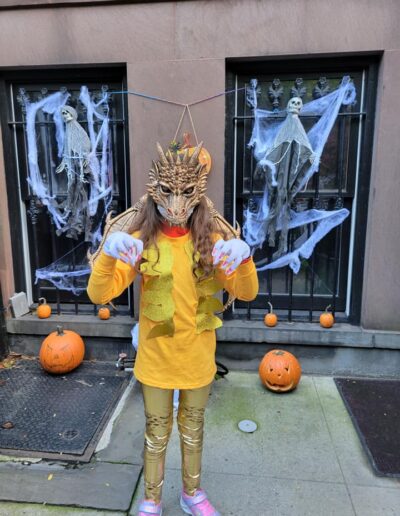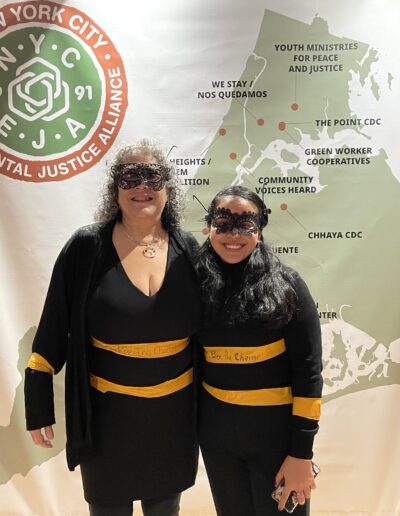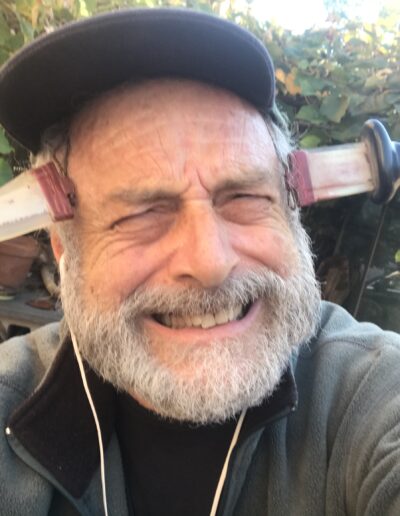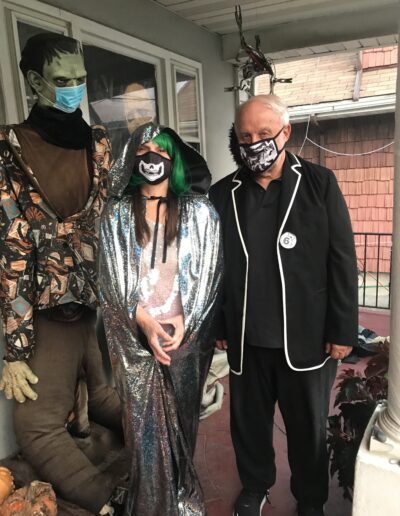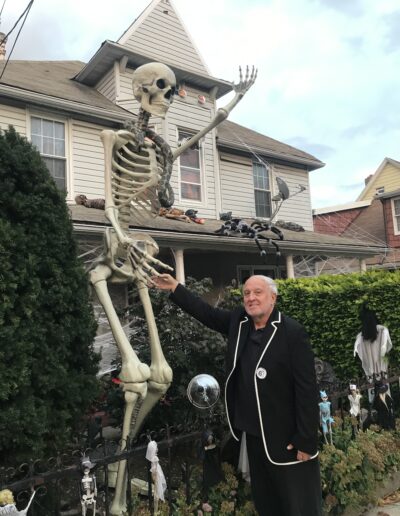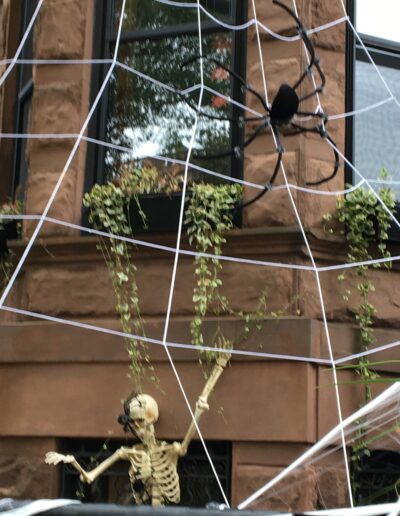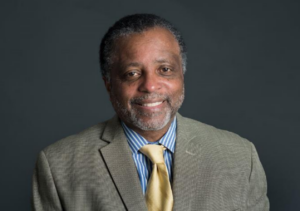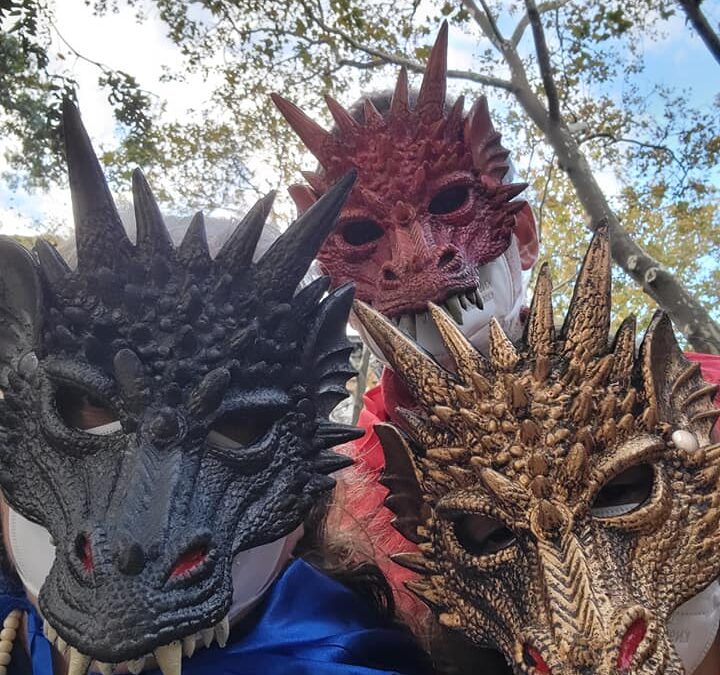

OPINION – Mask-less? Anti-virus shots? Really? ( Members’ Blog)
By Muriel Tillinghast
“As anti-vaxx groups nationwide continue to push dangerous theories, some are already reaping the consequences. In their latest deadly advice, the same anti-vaxx groups that pushed at-home COVID-19 remedies including drinking bleach, taking ivermectin, and gargling Betadine have been encouraging members not to go to the hospital.”
Daily Kos, Aysha Qamar , September 217, 2021
Clearly there is something going on in the resistance COVID protocols including wearing masks, frequent hand and face washing, and maintaining about 6 feet distance between strangers. I shake my head regarding not only the resistance, but the fury with which some of those parties respond. Masks and inoculations/vaccinations seem to be the prime targets. I try not to be judgmental, but here’s my thinking:
1. OK, I get it that one doesn’t want to be told what to do, but everyone gets directions, orders, advisements all during one’s life, some you follow willingly and others not so. However, if someone provides the hope of saving your life and the lives of your loved ones, what’s the beef?
2. I don’t like wearing masks either, but I have learned to make it work. It is a matter of getting use of something. I breathe through my nose and mouth when I have the mask on and I manage. You will too.
3. “I am not going to get the disease.” There’s no reasoning behind that one, so I’m going to skip that argument.
4. I got the flu after I got my flu shot. No argument. And you might catch COVID after the COVID shot, but here’s the kicker. With no immunity, severe illnesses including death is almost certain, if the virus is contracted. With the shots, it appears that the virus will be less virulent. Avoid the most serious effects is personally and medically important. One article said that 70 million people who are avoiding the inoculations are “simply kindling for the virus fire surely to come.”
5. So what is this virus in simple terms:
a. As a virus, this thing has no life. It is not a bacterium. It cannot be killed. It can be arrested when it has no more hosts in which to bred itself. How long can that last? Science doesn’t know. The idea here is to stop providing hosts in which the virus can breed and breed it does exponentially when it comes “home” to living, unvaccinated body.
b. Once inside the body, this rapidly reproducing virus can evolve at a rate this is nothing short of phenomenal. The virus enters in one form does not stay that way. The virus can evolve into several different forms depending on the host (your body) and its specific attack formations in various areas.
c. One viral entry can set up more than 12 or more different internal viral formations which can continue to create other formations. I now understand when doctors say, “There is nothing more we can do.” They are not chasing one problem, they may be chasing thousands of problems in one body: blood vessel (clouts), lungs (pneumonias), the heart to name few prime areas where the virus “sets up house.”
d. On NPR “Science Friday,” (October 1, 2021), a British case study was reviewed and it really effected me. About 10 days after he was infected, a man went to the hospital. The infection was noted, but nothing was happening to put them on alert and so he was sent home. As you know, hospital beds are in shortage and so is medical staffing, so he was not a priority. About 35 days later, he was back in the hospital and again his case was considered mild, nothing to work on. Then he came back 75 days later and he was in acute distress. He never got better. On the 101 day of his ordeal he died. His body carried more than a 1 billion viral load of the COVID type. That made me stop in my tracks. I don’t think that people understand this medical adversary. I know I didn’t!
1. Wait, there’s more, something called Long-COVID, for people who survive the virus. Here’s a layman’s type definition: “Although long COVID is poorly defined, the researchers [acknowledge] such symptoms as chest/throat pain, abnormal breathing, abdominal symptoms, fatigue, depression, headaches, cognitive dysfunction and muscle pain.”
2. COVID and its fallout will be with us for decades to come. As of this writing 700,000 Americans have died from the disease, the highest number of COVID deaths in the world. The social and economic impact is staggering, e.g., the number and care of children who have lost one or both parents and other significant family members, the loss of income by death or incapacities per household, loss of property, etc.
Be wise: get the shots, stay up on your vitamins, follow the protocols.
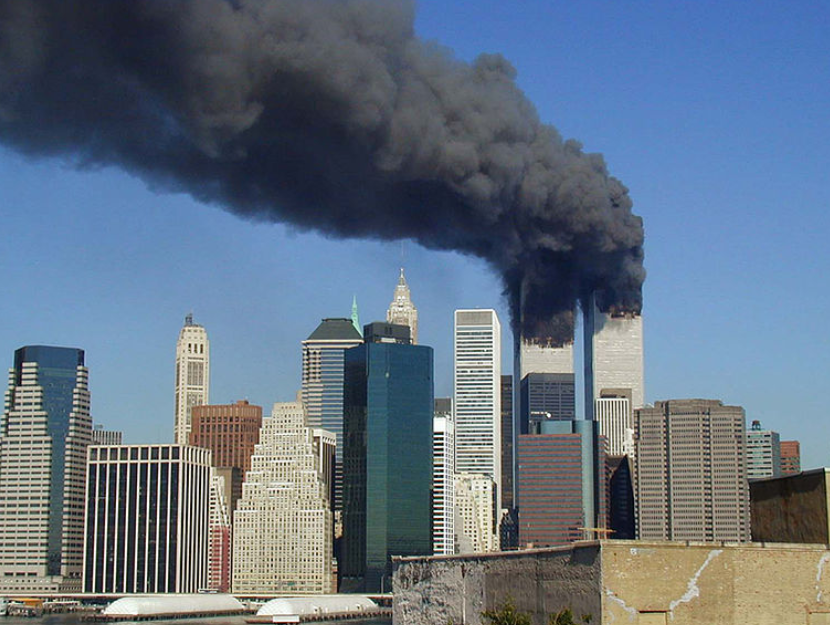
My 9/11 by Muriel Tillinghast (Members Blog)
I have written about this elsewhere, but I will commit to writing about it now. I can remember the day it happened It was a Tuesday morning. It was a day to remember not only because of the events that unfolded, but because it was an exceptionally beautiful morning. The sun was shinning brightly and the sky was the kind of clear blue that I would say is reserved for Central Asian skies which were the most beautiful I’ve ever seen. So, all of that was going through my mind while I was driving down 2nd Avenue on my way to a Head Start Sponsoring Board Council meeting. These meetings were held in a conference space of a major law firm housed at Grand Central high above the main floor.
I was listening to the news on 1010-WINS on AM as I remember. In the clarity of the moment, I looked at the sky and saw a plane approaching the World Trade Center (WTC), The building was so big that it could be seen for miles and from 42nd Street it was quite visible. I knew instantly something was wrong. No jet planes fly over that landscape in Manhattan. All jet plane traffic is routed to Queens, so I knew something was off. I just didn’t know how off!
I saw the impact and the black smoke and then the flames. I didn’t have answers, but I saw that there was an attack underway. That was from the left. On the right, while I don’t think that saw that plane, I saw its impact a few minutes later. And, another large cloud of smoke was curling in the crystal blue sky. The World Trade Center — I tended to speak of both buildings as one — was on fire on its topmost floors.(1)
As I had been to 109th floor several times in obviously better times, I knew that the fire department had no way of reaching whomever was up there as the fire equipment cannot go beyond the 9th floor, And, no water pressure could reduce that kind of combustion that far up. It is true that they can do some rescue off of rooftops, but that is assuming that the roof is not on fire and that was to going to be the case now. The people at the top — the ones who reported to work early — were going to be trapped by the fire. Who were they? Why had this occurred?
Fire trucks by the score were racing down 2nd Avenue along along with ambulances. I moved off to the side, parked and proceeded to my meeting in somewhat of a daze. The world that I saw through others’ eyes was fractured, and we all moved as if we were stunned. When I reached the mezzanine of the Pan Am Building, the former name for Grand Central Station, which I reached by escalator, I was told several things: there would be no meetings at this building today; the elevators were closed and we could not proceed any further, wait. Clearly, no we had no idea what in the devil was going on in our financial district or anywhere else, but the building was on lockdown. The word was, stop! After a while I could leave. We all were in a quiet hysteria.
I had to think! What to do now? One of my children was abroad, at least for now, there was safety there. I retrieved my car and proceeded south. Curiously, a continuous layer of thick, light-colored soot floated in the air and was soon to cover everything. According to the moment-to-moment news, a plane was in trouble in Pennsylvania. No details were available just then and another plane had run into the Pentagon. Four jets, four acts of kamikaze-style aggression actually not seen since WWII and pretty much unknown on this landscape were in full display.(1) The country was temporarily paralyzed. Those of us in motion moved around Manhattan in somewhat of a daze, but we kept on moving. Eventually, I headed back north towards upper Manhattan after being turned around because I could not proceed southward after a point. The police were re-routing all traffic after a certain point. I found my daughter who was on foot up around Columbia University. Those students were tumbling out of their classes, too, in disbelief. That I found my daughter rather easily was in itself a miracle!
[Lower Manhattan was now being cordoned off at Canal Street, I believe. At some point in the next several weeks, as I recall, I was there in the debris of ash along with the myriad of fire trucks and ambulances, police still trying to figure things out. On that day, however, whatever order existed was self-imposed. Getting a hold to what was happening took a bit of rock-hard sanity. Before returning to the upper part of Manhattan, I remember continuing going downtown on the east side as close to Lower Manhattan as I could get to find out more. Everywhere I was on that day, Manhattan was eerie, ghostlike, quiet, sobering, and ominous. We didn’t know what was coming next.]
Everyone, including me and my car was getting covered in this light white-grey soot which was everywhere. I was to learn that each one of us was on our own. I observed people were actually helping each other and people needed help. I remember that many restaurants opened their doors and gave people seats and water — the two things everybody needed. I may have taken a bottle or two of the free water, but once I joined with my daughter, we need to find a way to get home. That was our priority.
I was thankful having a car because the subway system was pure chaos. But a car had its limitations. All the bridges exiting Manhattan were closed. The Canal Street and Williamsburg connections were useless. At 59th Street, until way late in the night, that bridge was also closed. I thought about going up through the Bronx and coming down through the Whitestone, but that was closed, too. On another mission, I went to the bank to withdraw some funds and that was closed, too.
All the while, from the earliest time of this event — close to 9 A.M. — people were coming to rescue what they could at the WTC. It turns out that they couldn’t rescue much. With the fires burning and people jumping out of the windows to avoid the flames, but dying for sure on impact, being at the WTC was dangerous business all around. How many really died that day, I submit that we will never know.
I clearly remember that I tried to get someone to open an elevator which was packed with people in a particular building. I don’t remember how I came to learn that information at this time, but it doesn’t matter. It was ignored. Few, if any elevators were opened for various reasons they later said. And, those people that I knew of died. I never got nor did I expect to get an explanation as to why a specific elevator which I knew of was not opened when there was still hope for life. Were I less aware, I would say that the people in charge knew what they were doing, but I know better. Then after the planes’ impact and those immediate deaths, the buildings were due to collapse and so the danger continued. Breathing that air was toxic and actually fatal. And, Rudy Giuliani, America’s mayor, he was no where to be seen. We were on our own.
Christine Todd Whitman, who was at that point the inept head of the Environmental Protection Agency, put out a public notice that uniformed first responders were not to come with any individual protective equipment, e.g., masks, hazard suits and gear and so forth. She was probably goaded into that position as were her other policy moves. However, I thought that this one was particularly odd and colossally stupid. It turns out that I was correct on both counts because almost to a person, all of those who were at scene and obeyed those insane directives have died as a result of some form of cancer. Double deaths, but those of the rescuers could have been mitigated with some common sense. Nope, no common sense was available — just shock and reaction which is how we got to Afghanistan, but that is several paragraphs down in this writing.
We finally learned some of the businesses and companies were tenants. We would never know all as some information remains classified. We know many of the people who were caught in the conflagration, but some we would never know. Families would know who was caught because they didn’t come home ever again. Lots of undocumented people frequented the area for “off the book” work. The Wall Street area was infamous for immigrant workers in that regard. Also, the WTC was a major artery for many subways and underground walk throughs. It is very possible that people at the street level and below were the last to really know what was happening above their heads and by the time their learned, for many, it could have been too late.
There were shops in the area that I loved to browse. There was a great shop on the corner which had the best peasant loft bread and it was not far from a small jewelry store that frequently caught my eye. Across the street from where I once worked was the best hamburger joint in the world and down the street on the other side was a favorite Chinese restaurant on the second floor and a number of others serving great food within walking distance not too far away. Windows on the World, a top gourmet restaurant, was on the 109th floor at the top.
Only the people who were below where the planes hit had a chance to leave the buildings, if they moved quickly and exited by the stairs. Once I knew someone who was doing temp work in one of the buildings. She said, the building shook hard and she smelled smoke. Over the loud speaker, workers were encouraged to stay at their desks. She started putting her things together and heading for the door. She was on the 80th floor. She spoke to another person across the aisle and asked if she were leaving. And, they young woman said no. Well, my girl got up and headed for the stairs which were now flowing with a constant stream of human traffic. Two men were carrying a wheel-chaired co-worker down the stairs. They were not abandoning her. Everyone was moving quickly and quietly, helping where they could. No shoving, just focused determination and energy. No time to waste! According to her experience, they all made it, down and out as they scattered in the street streaming uptown. One hour and 42 minutes after impact, the inevitable happened. In the fire, the buildings collapsed. The people who stayed were never heard from again.
Anyone in an elevator was doomed. In fire, the elevators automatically go to the bottom shaft which is below floor level and have to be opened by engineers or trained service personnel — all unlikely to be available under these circumstances. This is why it is written on all elevators near their doors that in case of fire, take the stairs. “In Case of Fire, Do not Take This Elevator” should be familiar to everybody. All of it — that cozy enclave of wealth and consumer pleasures which was the financial district was gone almost in an instant. Confusion, anger, confusion and frustration, death remained. That was on that day and for many days and years to come.
In a day or two, a name was floated on the news, Osama Bin Laden.(2) I didn’t remember hearing of him before, perhaps I had, nor had I paid much attention to a country called Afghanistan. I am reminded, however, that prior to the New York experience with him, “he blew up our embassies in Kenya and Tanzania.”(3) Still he was vague, but not for long.(2)
It seemed, at least according to the Bush-Cheney-Rumsfeld issued statement, that the United States had been the victim of a state of war by one Osama Bin Laden and they were going to get him no matter what.(3) Now a thousand questions were asked then and most of them remain unanswered even now. How does an entire country get to be the target by one man’s operation even if it did cost thousands of lives? It was a complicated question and the answers were even more complicated. Nonetheless, soon, the United States was headed to Afghanistan to find this elusive character who lived in a cave and was on dialysis. In any case, the Americans who worked in Afghanistan knew him. It seems that there was a history via the mujahideen, the Afghan fighters, who had been battling the Russians for the previous decade or so. It seems that the United States — always itching to fight the Russians in a proxy war — knew and had trained many of the mujahideen who now had a leader who now declared war on the United States.
Let me add to the package of absurdities, our fearless leader, George W. Bush, the son of Herbert Walker Bush, who was not only not the sharpest knife in the drawer, was also the puppet to the puppet masters of Richard Cheney, his vice-president, and head of Halliburton, a big war contractor, along with Donald Rumsfeld and Paul Wolfowitz. This ensemble to arch-right nut jobs not only decided that a full-scale war should be raised against Afghanistan, but declared that “this would be a short war,” that we’d be over and out in a matter of weeks. Spoken aloud and with some semblance of intelligence, a war was started.
The blind were leading the blind, the United States walked into an area full-blown about which they knew little or nothing. In fact, maps of the country were so rare that the map sellers in the Manhattan had their maps pulled by the Pentagon. I know because I spoke to several of them. And, now 20 years later the Americans have finally left the best way they could, running and in some disarray. It wasn’t easy coming in. And, it was never going to be easy or victorious coming out. That I could have told them for free, not at the cost of $825 billion for which they have nothing to show for lives lost, money spent and the destruction.(4)
Alexander left Afghanistan 2,000 years ago. The Russians left it willingly after their losses in the 1990s. So why would the Americans think they could shape this rugged country in their image with some people they had just met and with whom they have almost nothing in common? Arrogance! Billions spent on something useless, while the infrastructure of the country was decaying, lots of homegrown issues were left to simmer then flameout. . . Osama was finally caught and disposed of on a clandestine mission in Pakistan of all places.
These are my short notes on the long engagement in Afghanistan and America’s militarism as its prime and most consistent area of foreign policy. Enough has been said for now.
__________________________
END NOTES
1 Later I learned that all 4 jets had about 20,000 gallons of fuel and were due to fly out to California. So, they were deliberately selected to do maximum damage for an air strike.
2 Some of the huge family spell their name Ladin, maybe to separate themselves from Osama’s legacy.
3 “ . . .[T]hat killed mostly Kenyans and Tanzanians (224 dead, 4,500 injured.” Additionally, he was the mastermind behind blowing up the USS Cole, a ship deployed in the Gulf.
Source: “In The End, Bin Laden Won,” Michael Moore, online substance.com, September 7, 2021
The USS Cole was a naval destroyer in the Gulf of Aden. Seventeen American sailors were killed, 38 wounded. Source: USS Cole attacked by terrorists – HISTORY
https://www.history.com › this-day-in-history › uss-cole…
4 1,856 of these deaths have been the result of hostile action. 320 American service members have also been wounded in action during the war. In addition, there were 1,720 U.S. civilian contractor fatalities, for a total of 4,096 Americans killed during the war. More than 46,000 civilians have been killed by all sides in the Afghanistan conflict. These are the direct deaths from bombs, bullets, blasts and fire. Sep 1, 2021 See,
United States military casualties in the War in Afghanistan
https://en.wikipedia.org › wiki › United_States_military_c…
Covid- Virus Update/Uptick (Members Blog)
By Muriel Tillinghast
As you can see, most of the Northeast and upper Midwest, as well as much of the West, have only “moderate” or “low” transmission.” But it looks to me like except for these areas, the rest of the country is off the chain and we are heading into big-time Covid-Delta trouble. The medical community is bracing for a peak in the fall which will backslide all of the efforts to date in keeping the positivity rate under control. 30% of the country remains uninoculated.
COVID-Delta is taking more than 50,000 people a day in England. In the United States, which has experienced more COVID-19 cases and deaths than any other country, the Delta variant represents about 83% of new infections. So far, unvaccinated people represent nearly 97% of severe cases.Haven’t we been here before?
Doctors and researchers don’t know everything about the Covid, but their information fields are growing and new strains of the virus are evolving.
For now, they know this much:
(a) Wear the mask in closed areas and among strangers. Double-masking is ok.
(b) Wash your hands and face frequently, running water and soap is the best.
Keep your unwashed hands away from your face.
Keep hand sanitizers with you at all times.
(c) Avoid closed-in locations with strangers. Keep your social distance (6 feet spacing is best!)
(d) Get inoculated and encourage others who have not.
This is the best prevention.
No, it’s not 100%, but it’s the best we have.
Ninety-seven percent of the people with Covid-Delta have been unvaccinated!
In parts of the country with relatively low vaccination rates, e.g., Arkansas, Florida, Louisiana, Mississippi, Missouri, and Nevada, hospitalizations have increased rapidly. You can see the map for yourself! The Delta variant is more highly transferable than the earlier Alpha one with which we struggled last year.
The unvaccinated are playing Russian roulette with their own lives and yours.
Sources:
The New York Times, The Morning, July 28, 2021, David Leonhardt
How the Delta Variant Upends Assumptions About the Coronavirus | Top News | US News – USNews.com
(Video) Where is the Joy in Freedom? By NYC Deputy Mayor J. Phillip Thompson
On June 13th, 2021, we welcomed NYC Deputy Mayor J. Phillip Thompson as a guest speaker at our Juneteenth platform titled “Celebrating Juneteenth: Where is the Joy in Freedom?” Below is a transcript of his talk:
Where is the Joy in Freedom?
By NYC Deputy Mayor J. Phillip Thompson
June 13th, 2021
Thank you for inviting me to speak today in commemoration of Juneteenth. This is the first time I’ve been asked to speak before an audience on the significance of Juneteenth, and I welcome the opportunity to reflect on the meaning of freedom from slavery.
This topic is deeply personal for me, as it is for most people of African descent in the Americas. I will tell you why. My father was raised from age 4 by his grandmother in Virginia. My great-grandmother, whom we called Ma Bessie, lived with us for a while when I was very young. Ma Bassie kept a bible that belonged to her mother, my great-great-grandmother. In that bible, my great-great-grandmother recorded the day that Ma Bessie’s sister was born. She wrote in big bold letters, “BORN FREE.”
My Dad died when I was 7, and my Mom became very ill when I was 9, so I lived with my mother’s parents from age 10. We lived in a small town in Pennsylvania, just a few miles north of the Mason-Dixon line—meaning just north of Maryland and the line that separated the North from the slave South during the 1800s. My grandmother’s family had escaped from slavery in Maryland around 1800. My grandmother’s most prized possession was a small cloth sack with some silver dollars in it from the early 1800s. These were the first dollars her ancestors had earned after their escape from slavery—her ancestors had saved those dollars to pass down through the generations—as a reminder. That dollar symbolized freedom for them.
My mother’s father was originally from North Carolina. His mother’s brother, his Uncle Jerry, had been a slave. I once asked my grandfather to tell me what he knew about slavery. He said that Uncle Jerry told him that the worst thing about slavery was the daily humiliation. He said women in the family would be pulled out of the shack at night and raped within earshot of the entire family—and there wasn’t anything they could do about it. I only saw my grandfather cry twice in my life. Once when my grandmother died, and the second time was when he told me this story. Uncle Jerry said that their economic life didn’t change much after slavery, they were as poor as they had been during slavery—they ate plenty of wild game just to survive. The humiliation didn’t end either. My grandfather told me that one day in the early 1920s a ferris wheel came to North Carolina. This was a big deal. He bought a white suit and a white hat and invited his sweetheart to ride with him on the ferris wheel. In the seat behind them a drunk white man got on board. When the ferris wheel had them on the way down, the white man was in top of them. The white man leaned over and threw up all over my grandfather’s white hat and suit—deliberately. My grandfather said there was nothing he could do about it—this was during Jim Crow.
My grandfather didn’t believe black people had ever been truly free, only somewhat less humiliated. My grandfather didn’t believe that poor whites were really free either, only somewhat less humiliated than black people.
I wanted you to know a little about my family’s history so that you might understand why the Juneteenth event and the topic of freedom from slavery is complicated for me—as I’m sure it is for many black people.
First of all, while ending slavery helped us have more dignity and control over our lives, it did not free us economically. Most black people, like my family, ended up working for the same white people they had been enslaved to—for what amounted to the same provision of goods. We never got an opportunity to come close to equal property ownership, or to accumulate wealth. We are still a poor people; many of us are vagabonds in a country we spent hundreds of years building, with no payment at all.
Second, the humiliation never stopped. This is what underlies a lot of the protest we’ve seen in the Movement for Black Lives. Police murders like that of George Floyd and Eric Garner are the most visceral examples, but the humiliation is daily and constant. I was once stopped by a white police officer at the Triboro Bridge. My mother, who was 70 at the time, was in the car, and she asked the policeman why we were stopped. He called my mother all kinds of foul names for simply asking him the question. My mother was a church lady. I never heard her say a curse word in my entire life. She didn’t deserve that humiliation. I have a lot more stories like this. We live in a country that diverted poor white people from dealing with inequality and their own poverty by giving them a false enemy, black people. And, then we give them guns and uniforms to take out their frustrations by stomping all over us.
Third, and this is the worst thing, why are we still gripped by racial conflict 156 years after slavery? I was listening to the Velshi show on MSNBC yesterday morning. He had a journalist on the show who had written a book about the danger of fascism in the US growing out of the Trump movement. Velshi asked if there are any examples of democracy being overthrown in an advanced industrialized democracy. The author said she had consulted with many scholars, and not one could think of an example. This really stunned me. The answer is so obvious. What was Jim Crow, if not a successful rebellion against democracy? Jim Crow lasted until I was in junior high school, this isn’t ancient history. Why were the people who stormed the Capitol on January 6th mostly white nationalists? Why can’t the United States look itself in the face?; why can’t white Americans see the race hatred that has undermined true freedom in this country?
This brings me to the main thing I want to discuss this morning, which is the meaning of freedom. If freedom is what distinguishes democracy from every other system, and makes us superior, then what does this freedom consist of? How did we convince ourselves that we are a democracy, a free country, with liberty and justice for all, while practicing slavery and Jim Crow? How do we say we’re a free country today when 1% of the population owns 40% of the nation’s wealth? What kind of freedom are we talking about here?
Indeed, we have a peculiar notion of freedom in this country. We talk about freedom as ‘free will’: the ability to do what you want to do, without government getting in your way. So, freedom in this way can be individualized: “I’m doing what I want to do. I’m free, even if you aren’t.” Or, “My freedom is so valuable, it’s worth sacrificing yours.” My question is, is this really freedom? Of course, it isn’t freedom for the oppressed person. But, is a willing participant in a system that oppresses Others truly free? Is freedom something that can be divided, between haves and have nots? You can live in a gated community, surrounded by security guards and NYPD patrols. You can avoid riding in the subway or going to low-income parts of the City. But is this freedom, or is it a golden jailhouse? You can go around the world and stay in fancy hotels and eat in the best restaurants, but will you ever know the joy of having someone genuinely happy to see you, as opposed to someone who just wants your money? Can any of us imagine a world where we didn’t need nuclear weapons, armies, and police at every corner? A city where we could walk anywhere without fear, and get welcoming smiles wherever we went? Wouldn’t this be a deeper freedom than what we have now; wouldn’t it create more joy?
What prevents us from getting to such a world? I believe the obstacle is the hubris that underlies our popular liberal conception of freedom. The liberal concept of freedom is that, ‘I can do what I want, so long as I don’t impede on the ability of others to do what they want.’ But, in society, we are constantly linked together economically, politically, and socially in towns and cities. The truth is that the more powerful among us have always impeded the ability of the poor, or of minorities, to do what they want. The powerful marginalize the voices of the impeded people so we don’t hear much about oppression until there’s a disruption—like a protest movement. The hubris is when the powerful people declare that this is indeed freedom; that we have figured out the best possible way to live—no more exploration necessary. But if this is the best society can hope for, why are there mass shootings every week? Why are so many Americans depressed and drugged up? Why is there not more joy?
Freedom, I suggest, is not something that individuals can possess by themselves. We must share freedom broadly or none of us can have it. None of us can expect to be free by ourselves, or truly happy, in a world full of hunger, militarism, and disease—as the pandemic has shown us once again. Even a hermit, living alone in the woods, cannot answer the question of ‘who am I’ without confronting the prior question of ‘who and what made me.’ Answering the question of who made me invariably involves family and society. The ability to think for oneself, and to question things, which is an essential part of freedom, begins with understanding thoughts already implanted in your head by society. A hermit that doesn’t understand society can’t really distance him or herself from society, no matter how far in the woods they go. In the same way, a person in this country that doesn’t try to understand racism cannot distance themselves from racism implanted by society in their heads, no matter how much they claim it has nothing to do with them. Nobody thinks with words and concepts they’ve created entirely on their own.
I will go one step further to say that the question of who and what made me has an existential or spiritual side to it that we should not avoid. We speak in terms of science and causality, of regularities we find in nature. But, underlying those regularities is the great unknown. We do not know the origins of the universe, and we therefore don’t know our own origins. Nor do we know destiny. What we see as regularities and relationships, even that between space and time, may only be coincidences of our galaxy. In other words, God (or the spirit of the universe) is not bound by our will or understanding, far from it. God is free. So maybe freedom does not begin with the human will or ego, but in our appreciation of God’s will. I do not mean by ‘appreciating God’s will’ that we should follow the prescripts of some human saint who tells us what God says or what God means—I mean something quite the opposite of settled conclusions and dictates. I mean that perhaps we can attain freedom by beginning with an appreciation of the wonder of our being alive with other human beings, with animals, and with the earth itself. Maybe the questioning that underlies the human desire for freedom begins with the wonder of our existence. Maybe love, and the desire for justice, eminates not from our heads so much as from our hearts–our common fragility, suffering, and ignorance in the face of creation—rather than from our individual willfulness. Maybe we can find greater joy and fulfillment in protecting and caring for the earth and its beings—in appreciation of universe and creation–than in doing something for ourselves individually. Perhaps the domination we think our technology hs exerted over the earth is as false as our claims that we have mastered democracy. Maybe the most important thing we can take from Juneteenth is a spirit of humility: we have done great wrongs, we have a long way to go, and we must cultivate the freedom to question ourselves and each other along the way in the course of building a more caring and joyful world. Maybe this is what the Apostle Paul meant when he said, “Where the Spirit of the Lord is, there is freedom.” (2 Corinthians 3:17)


